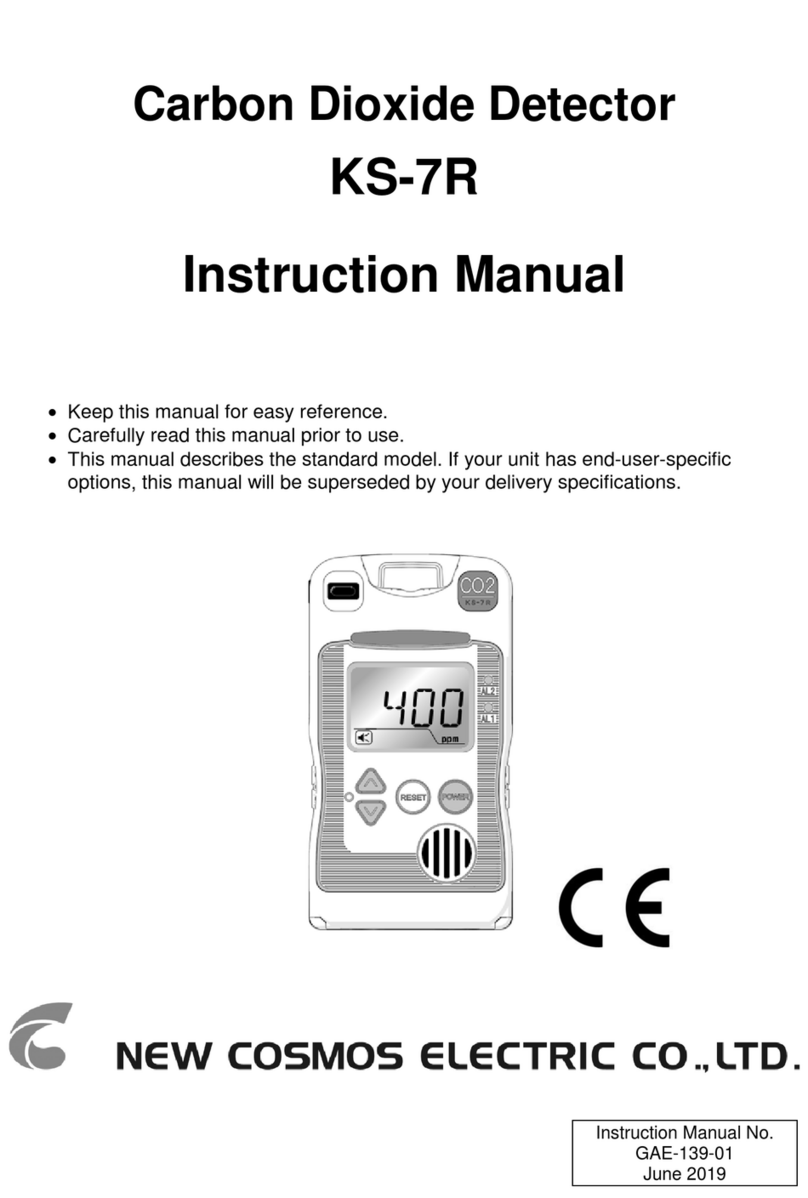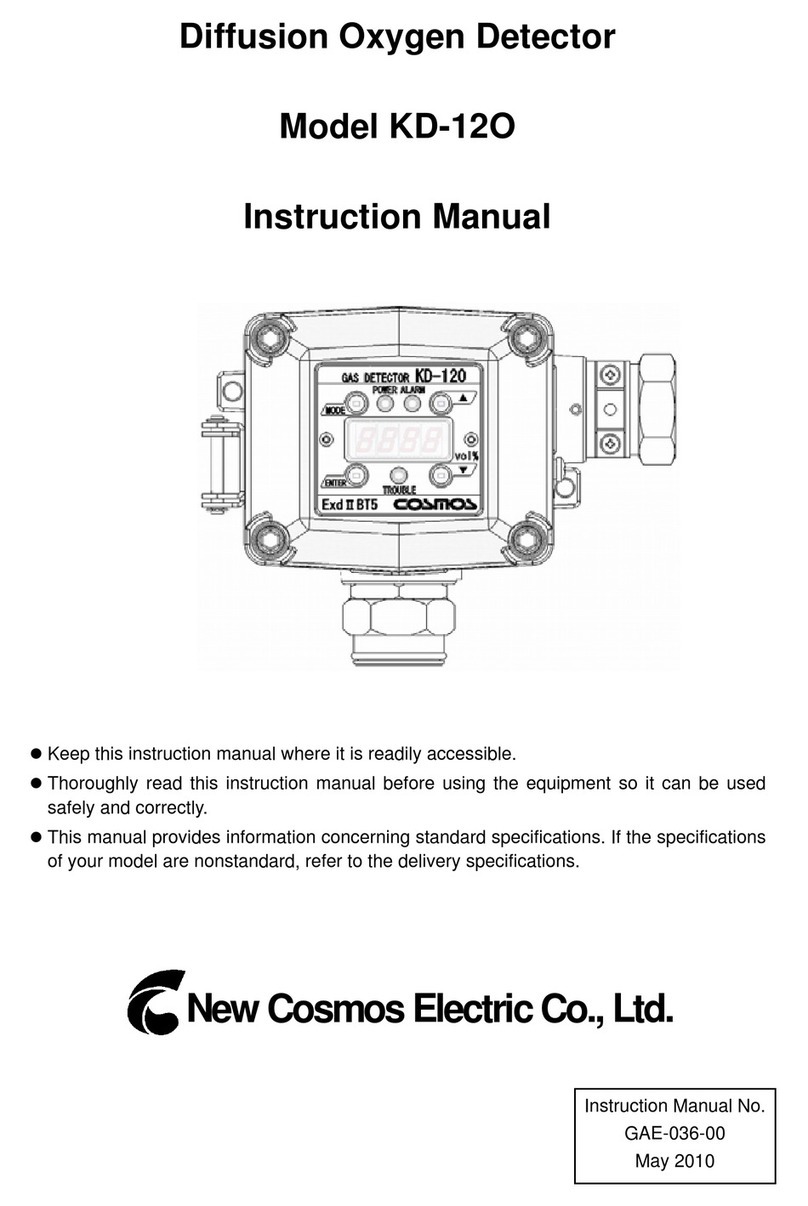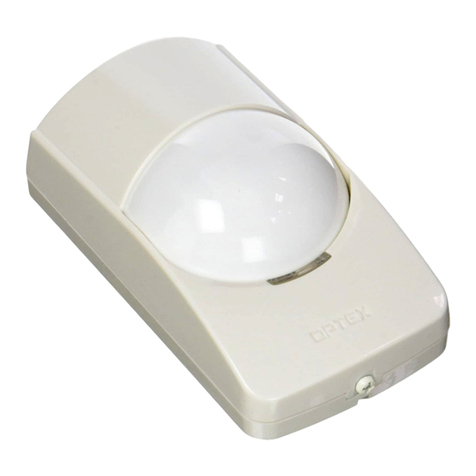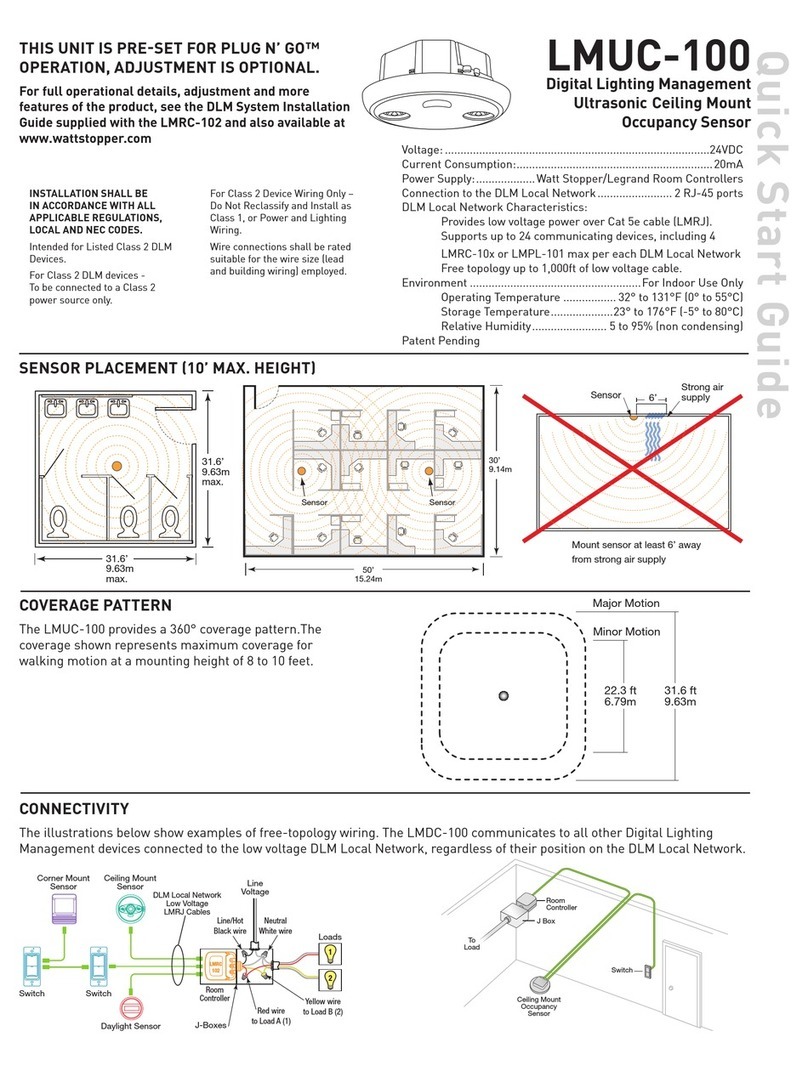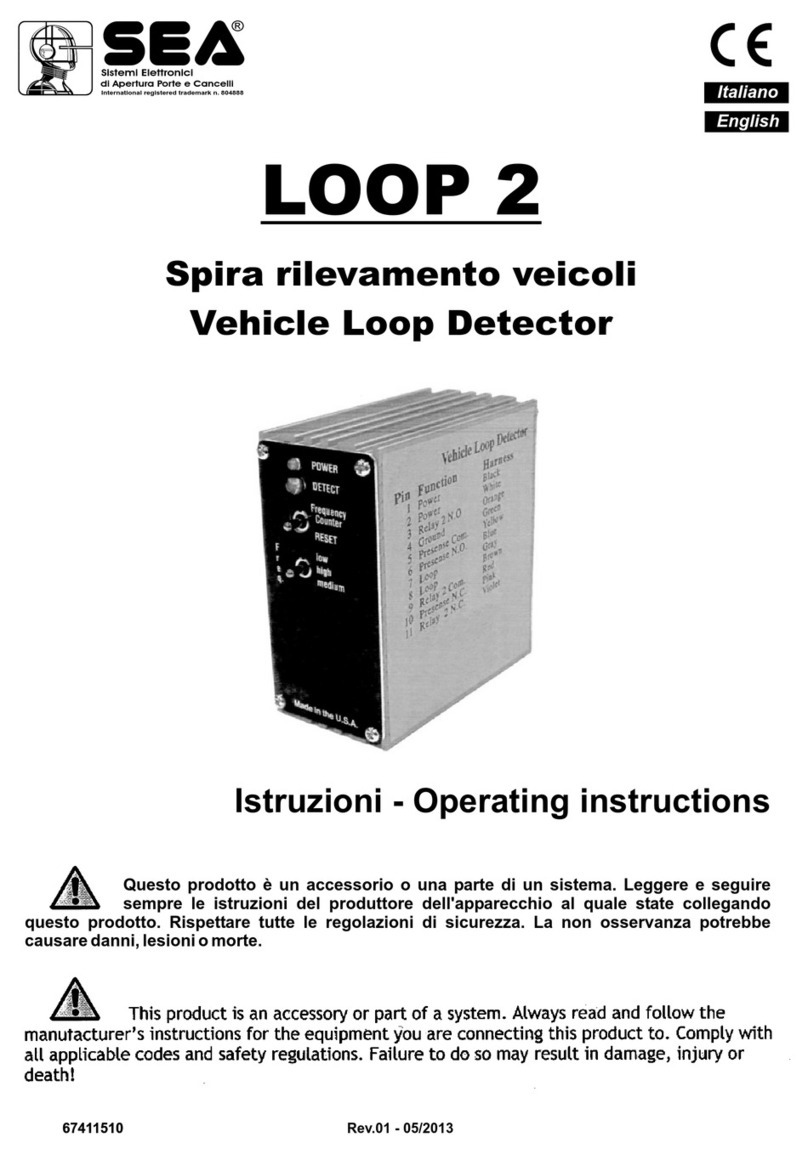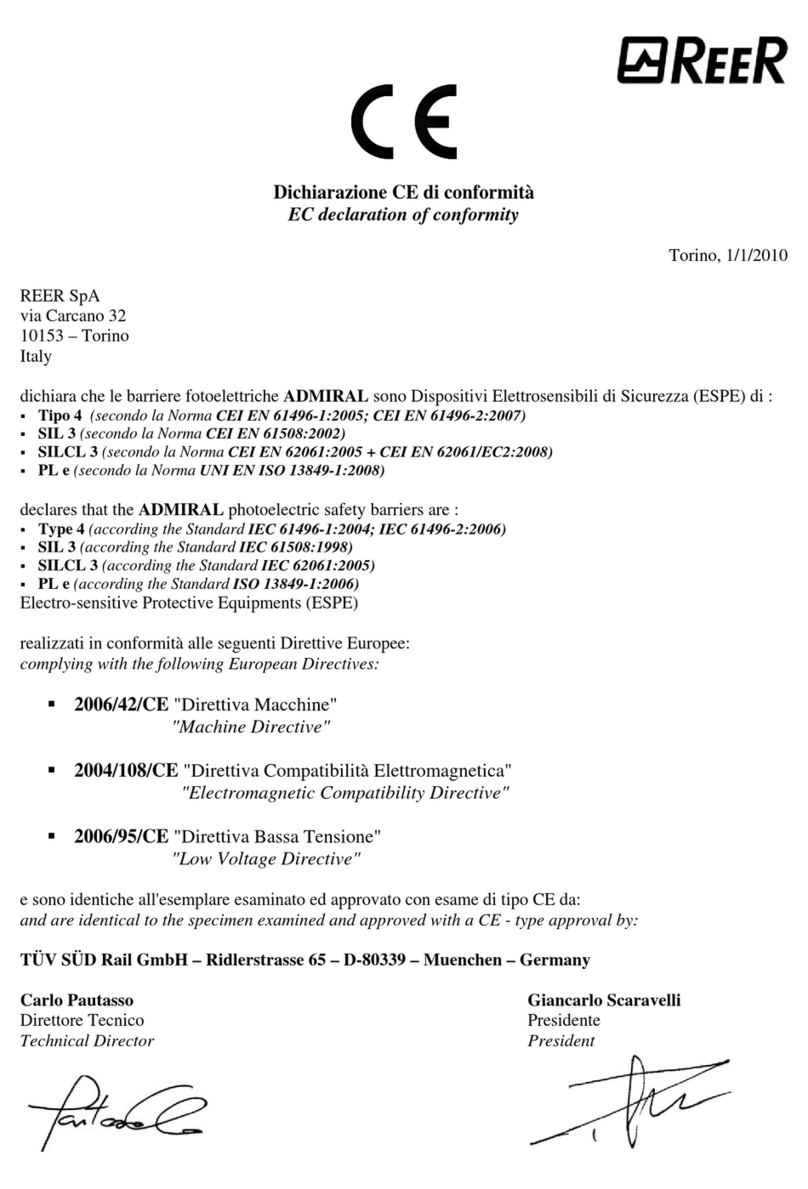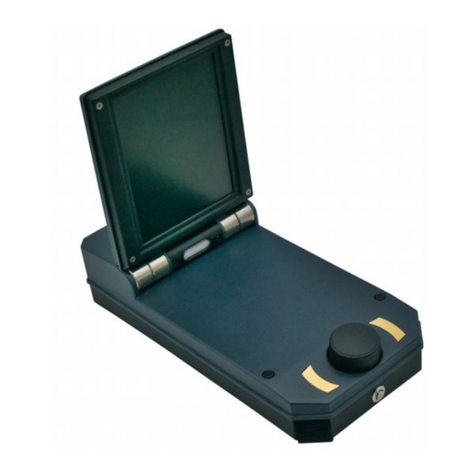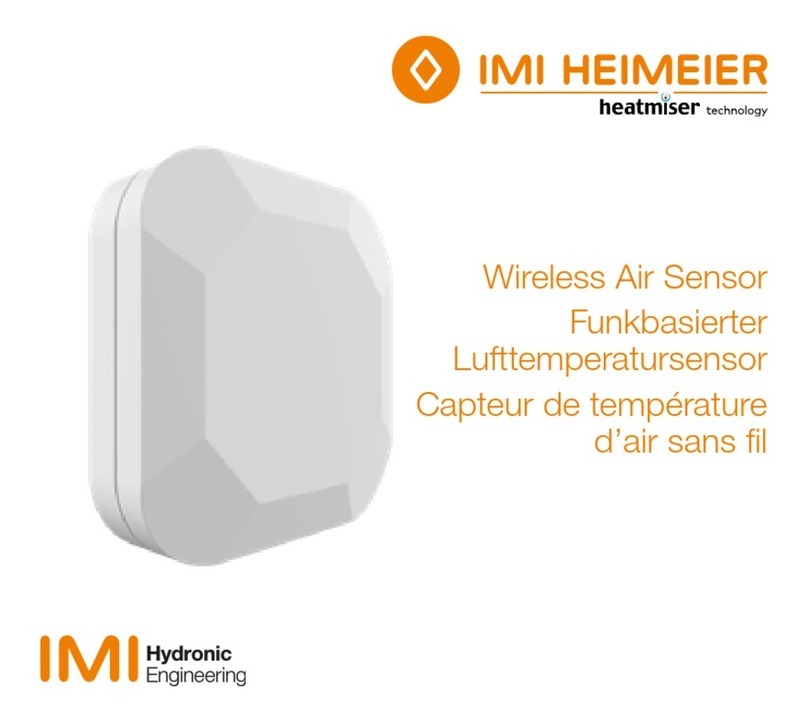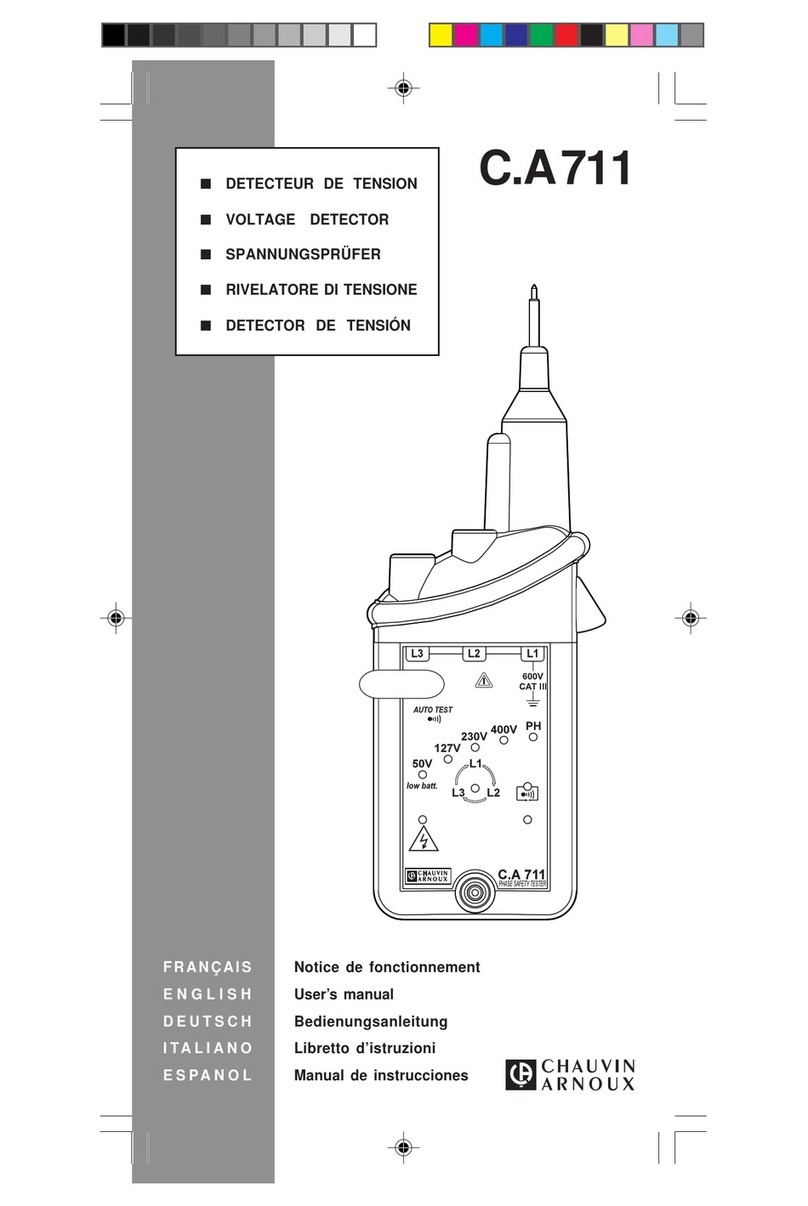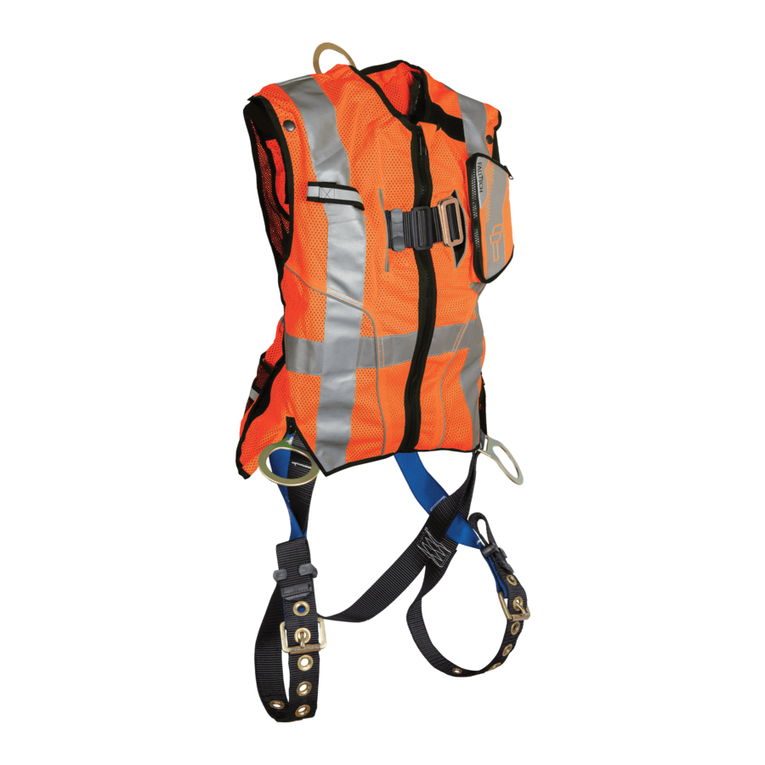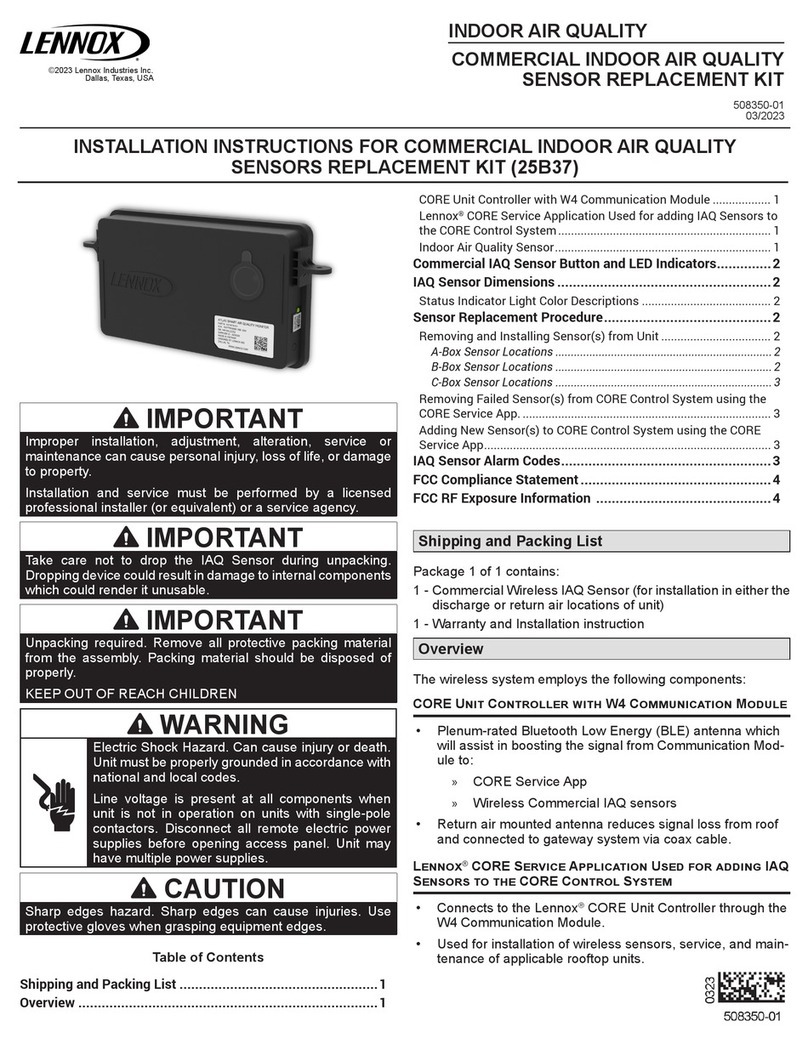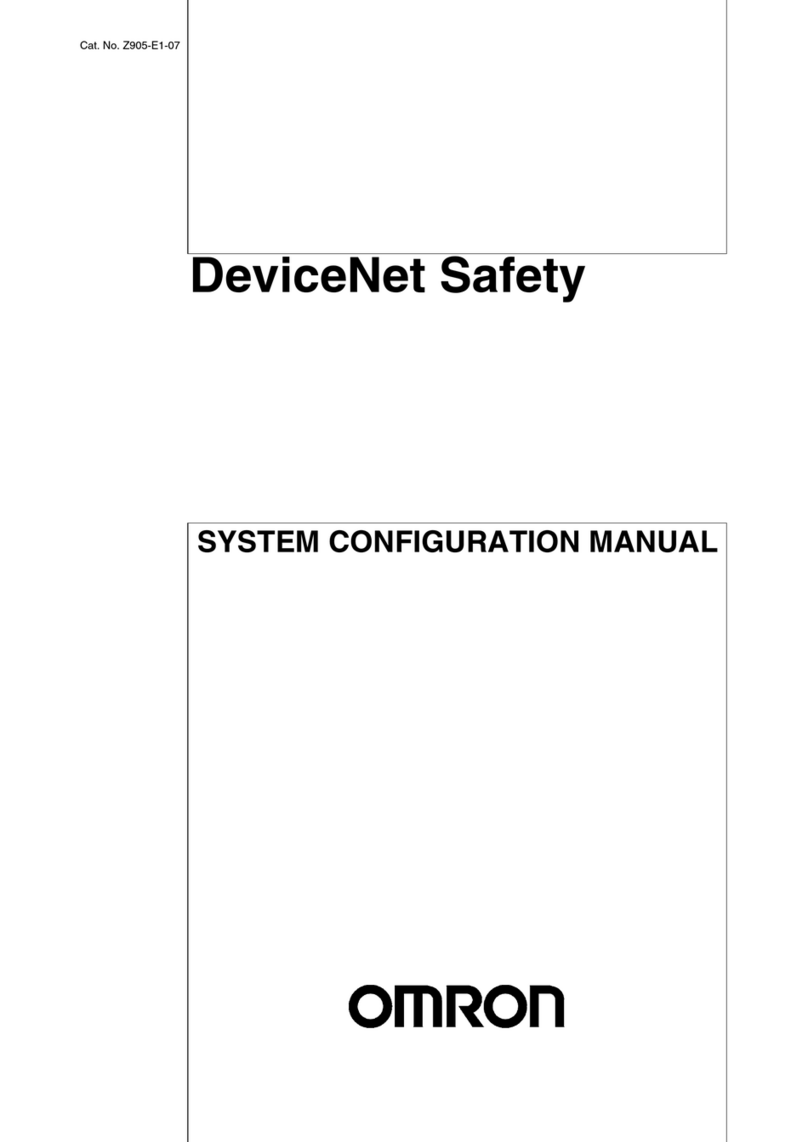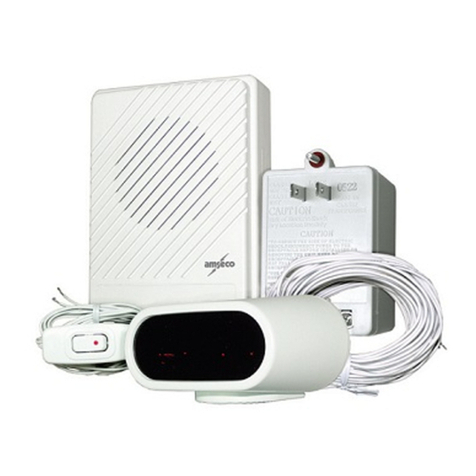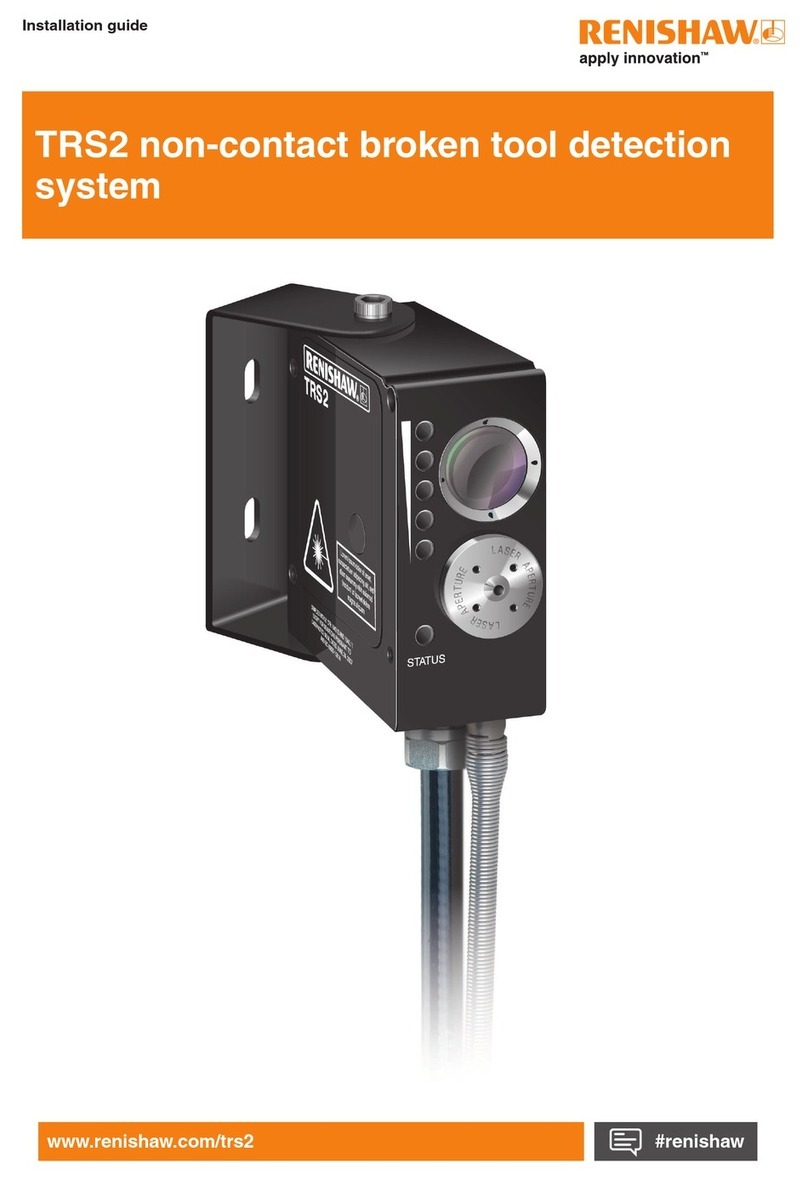New Cosmos Electric PS-7 User manual

EXTRACTIVE GAS DETECTOR
OPERATION MANUAL
Model PS-7
Contains the PS-7, PS-7 Administrator & Pyrolyzer Manuals
740 McArdle Drive, Unit C – Crystal Lake, IL 60014
815-788-5200 Phone 815-788-5300 Fax www.dodtec.com
•Store this operation manual in a convenient location, and consult it whenever necessary.
•Operate this unit only after reading and fully understanding the content of this manual.
•This manual uses standard specifications. If your specifications are different, the operation manual
that came with your unit takes priority.

The name and function of each component
→P 5
Installation and wiring the base unit
→P 9
Basic operating instructions
→P 12
Normal operation
state →P 22
How to install the sensor unit
→P 31
When the gas alarm is activated
→P 23 and P 22
Blinking
The different types of trouble warnings
→P 25
Blinking
Troubleshooting
→P 36
IN OUT
Cable
entry
Stops rotating
ALARM2

TABLE OF CONTENTS
1 Introduction..................................................................................................................................................... 1
2 Safety Instructions.......................................................................................................................................... 2
3 Contents of This Package .............................................................................................................................. 3
4 System Flow Diagram .................................................................................................................................... 4
5 Description ..................................................................................................................................................... 5
5-1 Components on the Main Unit ................................................................................................................. 5
5-2 Details of the Key Switch Section ............................................................................................................ 7
5-3 Details of the LCD Screen Display........................................................................................................... 8
6 Installation and Wiring .................................................................................................................................... 9
6-1 Installing the Main Unit .......................................................................................................................... 10
6-2 Wiring Instructions ................................................................................................................................. 11
7 Operation...................................................................................................................................................... 12
7-1 Operation Procedures............................................................................................................................ 12
7-2 Gas Alarm Operating Instructions.......................................................................................................... 23
7-3 Trouble Alarm Operating Instructions..................................................................................................... 25
7-4 Test Mode Settings and Operating Instructions ..................................................................................... 26
7-5 Maintenance Mode Settings and Operating Instructions ....................................................................... 27
8 Maintenance and Inspection......................................................................................................................... 28
9 Replacing Consumables............................................................................................................................... 30
9-1 Replacing the Filter Element (FE-1)....................................................................................................... 30
9-2 Attach/Replacing the Sensor Unit .......................................................................................................... 31
9-3 Replacing the Sampling Unit ................................................................................................................. 34
10 Troubleshooting.......................................................................................................................................... 36
11 Specifications.............................................................................................................................................. 37
12 Warranty..................................................................................................................................................... 38
13 Detection Principles.................................................................................................................................... 38
13-1 Electrochemical Sensor ....................................................................................................................... 38
13-2 Hot-wire Semiconductor Sensor .......................................................................................................... 39
13-3 Galvanic Cell Sensor ........................................................................................................................... 40
14 Glossary ..................................................................................................................................................... 41

- 1 -
1 Introduction
•Thank you for purchasing the extractive COSMOS Gas Detector Model PS-7.
•This Gas Detector is designed to detect the leakage of toxic and combustible gases. It is designed to display the
concentration level of detected gases on the main unit and output that information externally as an analog
signal. When a preset warning level of gas is detected, the warning lamp (ALARM lamp) on the main unit starts
to blink, the external contact output is activated, and the amount of leaking gas is monitored.
•The sensor unit and sampling unit used in the Gas Detector can be replaced without the use of tools. Regular
replacement of these components eliminates the need to perform calibration on-site.
•To ensure correct operation, read this manual carefully before attempting to install or operate the Gas Detector.
Explanation of Symbols
This manual uses the following symbols. Their meanings must be understood and observed to ensure safe
operation of the unit.
Danger: Indicates an impending hazardous situation that, if not avoided, will result in
serious injury or death.
Warning: Indicates a potentially hazardous situation that, if not avoided, could result in
serious injury or death.
Caution:
Indicates a potentially hazardous situation that, if not avoided, could result in
minor injury or physical damage.
Note Indicates operational advice and/or instructions.

- 2 -
2 Safety Instructions
•Read and understand the following information to ensure that the Gas Detector is used correctly.
•The Gas Detector must always be used in accordance with relevant laws and regulations, and all wiring,
installation, and other work associated with the Gas Detector must be performed by qualified personnel.
Warning
•When the Gas Detector detects a gas leak, carry out the procedures stipulated by your
company in response to gas leaks.
•The Gas Detector must be grounded to prevent electric shock.
•The Gas Detector is not explosion-proof. It must be installed in a safe location.
Caution
•Do not disassemble or modify the unit, or change its construction or circuitry in any way. Doing
so may impair the unit's performance.
•The Gas Detector is not drip-proof and must be installed in a location free from spattering
water.
•The unit must be used in accordance with prescribed laws and regulations.
•Please turn the power switch located on the front of the base unit OFF when attaching or
removing the main unit. If this is done with the switch left ON, the unit may become damaged,
or give false alarms.

- 3 -
3 Contents of This Package
•The following components are included with the standard Gas Detector unit. Ensure that all components are
present before attempting to use the unit. Every effort is made to ensure that the unit is packed correctly, but if
any components are damaged or missing, contact your local authorized distributor.
Description Quantity
PS-7 Gas Detector 1
Male connector (R1/4- ø6) 2
Filter elements (FE-1, 12 pcs.)
(For MF-50 Filter Unit) 1
Fuse (0.5 A) 1
Mounting screws (M4 ×8) 2
Stick for Test 2*1
Operation Manual 1*2
Operation Manual 1*2
*1 2 sticks are provided with each system.
Note: 1)The sensor unit is not bundled with the Gas Detector, and must be purchased separately.
2)When it is with DeviceNet unit, the contents are as described in the DeviceNet Unit
Instruction manual
Options
Option Quantity
Filter (MF-51)*3 Ordered quantity
Gas collector ( PF-D1 ) Ordered quantity
*3 Recommended for use with highly adsorbent gases
(HCl, Cl2, NH3, etc.) other than HF and F2.

- 4 -
4 System Flow Diagram
Figure 1 System flow diagram
G
A
S
O
UT
Rc 1/4
Caution
The analog output source is not insulated from the power source. In case it is used in combination
with other types of devices, the analog signal must be isolated from flowing into the power sources of
the other devices.
LCD Display
Maintenance
switch
P
Pump
Sensor
Flow
sensor
MF-50 (Dust filter)
G
A
S
IN
Rc 1/4
G
A
S
IN
Rc 1/4 Controller
F1
ZA1
ZA2
ZC
TA
TC
Power
DC 24V
TB
2
1st level warning
2nd level warning
Common
Trouble
warning
Warning contact capacity (ZA1orZA2-ZC)
(Rated load: 125 V AC or 30 V DC
0.5-A resistance load)
Trouble output (TA-TC)
(Rated load: 30 V DC 30-mA
resistance load)
Gas alarm contact output
(N/O)
PW
Jack
(4-conductor shielded cable)
+
-
+
-
TB
1
FS
Sampling Unit
P
N
G
H
E
SW SW
TR
AL
Key Sheet
A
nalog Output
4 to 20 mA DC
Trouble warning output
(N/C)
Warning
Pay special attention to the polarity of the trouble warning output. As the circuit protection diodes are
internalized, if the polarity is reversed, the trouble warning signal will not be output.
CPU Board

- 5 -
5 Description
5-1 Components on the Main Unit
No. Description Function
1 POWER lamp (Green) Power lamp. Illuminates during regular monitoring
operations.
2 TROUBLE lamp (Yellow) The lamp blinks when trouble occurs.
3 ALARM lamp (Red) The lamp blinks when the concentration level of detected
gas exceeds that of the preset alarm level.
4 LCD display
Warning displays, detected gas levels, bar graphs of gas levels,
trouble states, maintenance modes, test mode, flow sign are all
shown on the LCD display.
5 Key switches (inside) Switches to carry out the various settings.
6 Filter unit (MF-50) Incorporates a filter element (FE-1) that prevents dust from
entering the gas inlet and tubes leading to the sensor.
7 Operation section cover Lift up gently to use key switches.
8 Front panel Contains the main board.
9 Sampling unit The pump is contained inside the sampling unit.
10 Main body cover The cover protecting the sensor unit.
11 Latches Latches to attach the main unit onto the base unit.
12 Locked/unlocked line A line (mark) to show the return position of the latch.
10
7
9
11
8
12
2
3
1
6
5
4

- 6 -
○
14
○
20 ○
22
Figure 3 Dimension & description (Units: mm)
No. Description Function
13 Fuse 125 V, 0.5 A
14 Base unit power switch The power switch for the base unit.
15 Mounting holes Screw holes (∅5.5) for wall mounting.
16 Terminal strip Used to connect external wiring.
17 Main unit power switch The power switch for the main unit.
18 Maintenance switch A switch that is set to regular, maintenance mode 1 (MNT1) or
maintenance mode 2 (MNT2).
19 Connector for the pyrolyzer A connector to provide power to the pyrolyzer when one is being
used. (CDP-7 type).
20 Gas inlet Aspiration inlet for sampled gas. A filter unit (MF-50) is attached.
21 Gas outlet Exhaust outlet for sampled gas.
22 Cable entry A hole for incoming cables.
19 21
20
22
13
16
15
17
18
14

- 7 -
1
2 3
5
7
4
8 6
5-2 Details of the Key Switch Section
Figure 4 Names and functions of key switches
No. Description Display Function
1 Span adjustment
switch SPAN To carry out 21vol% adjustments.
(For the COS-7 oxygen sensor unit.)
2 Zeroing switch ZERO
To carry out zeroing.
(For the CHS-7 flammable gas sensor unit or CDS-7 toxic gas
sensor unit.)
3 Alarm point set switch AL Used to check the values of various alarm settings.
4 Communications
switch COMM. Sends sensor unit information to the main unit after initial
start-up, etc.
5 Up/down switch UP
DOWN Used to change the values of the test output, etc.
6 Connector to check
analog output CP A connector employed especially to check the analog output
from the main unit (4- 20 mA).
7 Test switch TEST Used to set to test mode.
8 Special command
switch (None) Used to change the values of various settings.
(For administrative use.)
1 Pull back
2 Push down

- 8 -
5-3 Details of the LCD Screen Display
Figure 5 Parts of the LCD screen display
No. Meaning
1 Shows the detected gas concentration (with units).
2 Lights when the flow rate is decreasing. (Also see no. 6 below.)
3 These light when the detected gas concentration exceeds that of the preset alarm level.
4 Lights on when there is sensor trouble, or when a sensor is inserted incorrectly.
5 Lights on when the pyrolyzer is disconnected.
6
Shows the flow rate of the sampling gas.
Fast rotating display: When flowing at normal rate (0.5 L/min).
Slowly rotating display: (Showing that it is clogged) When the load on the pipe is high.
No rotation: (Warning that the flow rate is decreasing) When the flow rate has decreased.
7 Bar graph of gas concentration. One division is 5% of a full scale value.
When the bar extends to the far right, it is at full scale.
8 Shows the values of various settings. (For administrative use.)
9 Lights while in test mode.
10 Lights while in either maintenance mode 1 (MNT1) or mode 2 (MNT2).
LCD display
1
4 5
3
8
6
7
9
2
10

- 9 -
6 Installation and Wiring
Warning
•The Gas Detector is not explosion-proof. It must be installed in a safe location.
•When detecting highly adsorbent gases such as HF and F2, install the Gas Detector with the
filter element (FE-1) removed from the filter unit (MF-50). (Refer to 9-1 Replacing the Filter
Element.)
•For the gas sampling pipe, use a Teflon conduit of ø6/4 having a maximum length of 20
meters. Note, however, that for highly absorbent gases, such as HF, F2, HCl, Cl2and NH3, the
length of the conduit should be no more than five meters.
Caution
•The Gas Detector should be installed in a location free from shock and vibration, and away
from sources of high frequencies or magnetism.
•Do not use the gas collector hood when detecting gas concentrations in narrow spaces such
as ducts.
•Do not install the Gas Detector in locations where the temperature may exceed 40°C or dew
condensation or sudden temperature fluctuations may occur.
•The Gas Detector is not drip-proof.
•The pressure difference between the gas inlet/exhaust ports and the ambient atmosphere
must be within ±1 kPa. The pressure difference between the inlet port and exhaust port must
be such that the inlet port is a negative pressure of 1 kPa or less.
•Install the Gas Detector vertically. (Inlet port and exhaust port must be in downward direction.)
•Locate the detector tip (the tip of the gas sampling pipe) to be appropriate for the specific
gravity of the gas to be detected. It must also be placed in a location where the target gases
are likely to accumulate.
Type of gas Installation height
Heavier than air Not more than 30 cm
above floor level
Equivalent to air 75 to 150 cm above
floor level
Lighter than air Near the ceiling

- 10 -
6-1 Installing the Main Unit
(1) Determine the installation point and attach the base unit
using two M4 ×8 screws.
(2) Run a cable through the cable entry (the cutout hole near the
bottom of the base unit) and connect to the terminal board.
(Refer to 6-2 Wiring Instructions.)
(3) To attach the sensor unit, refer to 9-2 Attach/Replacing the
Sensor Unit. To attach it after attachment of the base unit,
proceed to step 4.
(4) Remove the protective seal before attaching the main unit.
2 Attach in line with the rails
(5) Pull back the latches on both the left
and rights sides of the bottom of
the base unit, and attach the main unit
inserting from the top side first.
1 Pull the latches on both sides forward
(6) Push both the latches on the left
and right hand sides of the
base unit back in until the locked/unlocked
line can be seen
Note
•The protection seal on the base unit is to protect the connector and internal piping when attaching the base
unit. This seal is not necessary after the main unit is attached. Please dispose of it properly in accordance
with company disposal regulations.
•If multiple units are to be mounted in a row, ensure that there is sufficient space between each unit (at least 3
cm on either side is recommended) to allow the main unit to be removed and reattached.
Locked/ unlocked line
Latch
Push both the latches back in
Warning
Be sure to push the latches back as far as they will go. If the latches are not back behind the locked/
unlocked line, normal gas detection will not be performed.
Rail
Protective seal
M4×8
Latch
(Left right)

- 11 -
6-2 Wiring Instructions
Terminal
Board Sign Polarity Function
P +
N − Power supply (24 V DC)
G +
H − Gas concentration output (4-20 mA DC)
TB1
E Ground
ZA1
Gas alarm contact output (1st level)
(no voltage contact 1a)
Rated load: 125 V AC or 30 V DC, 0.5-A
resistance load
ZA2
Gas alarm contact output (2nd level)
(no voltage contact 1a)
Rated load: 125 V AC or 30 V DC, 0.5-A
resistance load
ZC ZA1, ZA2 common
TA +
Trouble alarm
(Open collector: N/C)
Rated load: 30 V DC, 30-mA resistance
load
TB2
TC − Trouble alarm common
Figure 6 Terminal strip
Warning
•Be especially careful regarding the polarity of the trouble alarm (TA: plus, TC: minus.) as the
circuit protection diodes are internalized, if the polarity is reversed, the trouble warning signal will
not be output.
•To avoid electric shock, always disconnect the power supply before performing any wiring
operations.
•Ensure that the unit is properly grounded.
Caution
•Do not lay cables near sources of electrical noise, such as high-capacity transformers, motors
or power supplies.
•Ensure that the cables on the external device side and the gas detector side are correctly
connected.
+
−
+
−
+
−

- 12 -
7 Operation
7-1 Operation Procedures
Carry out operations in the following manner. Refer to the items inside each box for more detailed instructions
(listed from the next page)
Outside the range
of 24V±10%
Setting values need
to be changed
No
Yes
Setting values don’t
need to be changed
TROUBLE Lamp(Yellow): Off
TROUBLE Lamp
(Yellow) blinking
No
Yes
Within the range
o
f 24V±1
0%
(2)Based unit
power ON
Base unit start-up
completed
Attach the main unit
(5) Main unit power ON
Initial setup
(1)Check power
voltage
24 V DC ±10%
Do combustible or
toxic gases need to be
detected?
(6)Self-diagnosis of
the detector
(6) Check for
incorrect
insertion of the
sensor unit
(8) Check various
setting values
Change the
values of various
settings
1
(11) Does toxic or
combustible gas need
to be detected?
(11) For detecting
oxygen
deficiency?
(12)Initial assembly
is completed
(3) Conduct analog
check for the base unit
(11) Carry out zeroing
(11) Carry out 21vol%
adjustment
For detection of
oxygen deficiency
There is a
problem
No problems
(9)(10) Check flow
rate and airtightness
of sampling
Check for loosening
of pipes etc
(4) Has the sensor
unit been attached?
Attach the sensor
unit
Yes
No
•
Check the voltage of the power
supply source
•Check the wiring to the terminal
strip
(12) Initial start-up
completed
1
(1)Check power
voltage
24 V DC ±10%
Example
Refer (1) on
page 13
(3) Base unit analog
adjustment

- 13 -
7-1 Operation Procedures (Contd.)
Proceed with operation in the following manner.
(1) Verify that the power supply voltage (the voltage between the P and N of the terminal block) is 24 V DC
±10%.
(2) Switch the base unit power ON.
Warning
•Verify that the power supply voltage is 24 V DC ±10%.
•Before operating the Gas Detector, verify that the sensor unit correctly displays the type of gas
to be detected and the full-scale value.
Caution
•Before turning the power ON, check that all connections are correct. Refer to 6-2 Wiring
Instructions and the separate Delivery Specifications, if available.
Power ON

- 14 -
(3) Analog adjustment in maintenance mode 2
The analog output of the main unit changes when the maintenance switch is set to 2.
Adjustment should be carried out based on the following instructions as the analog output also differs
depending on the sensor unit being used. For details regarding maintenance modes, refer to 7-5
Maintenance Mode Settings and Operating Instructions.
To set to maintenance mode 2 (MNT2) To set to maintenance mode 2 (MNT2)
Measure the analog output (current) of “G” and “H” on
the terminal board TB1 using a tester, etc.
If it falls within the range shown below, go on to
the next step.
If it is not within the range shown below,
use the analog adjustment volume for maintenance
mode 2 to bring it into this range.
Toxic gas sensor unit : CDS-7
Combustible gas sensor unit : CHS-7
Oxygen sensor unit : COS-7
(Value when at full scale 25vol%)
1. Pull back to open
2. To the right
Oxygen sensor unit : COS-7
(Value when at full scale50vol%)
*MUST BE ADJUSTED
1. Pull back to open
2. To the right
The tester tests the
current range
G= plus
H= minus
Analog adjustment volume for maintenance
mode 2
Analog adjustment volume for maintenance
mode 2
The tester tests the
current range
G= plus
H= minus
Measure the analog output (current) of “G”
and “H” on the terminal board TB1 using a
tester, etc.
Adjust it to within the range of 10.64 to
10.80 mA by using analog adjustment
volume for maintenance mode 2.
Model of sensor unit Adjustment range
CDS-7 3.92 to 4.08 mA
CHS-7 3.92 to 4.08 mA
COS-7 17.32 to 17.48 mA

- 15 -
Set to normal mode (center) Set to normal mode (center)
(4) If the sensor unit is not attached, refer to 9-2 Attach/Replacing the Sensor Unit, and attach the sensor unit.
(5) Switch the main unit power ON
*Refer to 6-1 Installing the Main Unit.
1. Pull back to open
2. Power ON
1. Pull back to open
2. To the center
For toxic gas sensor unit: CDS-7, or
combustible gas sensor unit : CHS-7
Oxygen sensor unit : COS-7
(When full scale value is 50vol%)
1. Pull back to open
2. To the center
Oxygen sensor unit : COS-7
(When full scale value is 25vol%)
Set analog output to
17.4mA as the regular
oxygen concentration is
21%.
Set analog output to
10.7mA as the
regular oxygen
concentration is
Analog
output Gas
concentration
Full scale
Analog
output Oxygen
concentration
Analog
output Oxygen
concentration

- 16 -
(6) Begin self-diagnosis after the front lamp and the LCD screen have been on for over one second.
The TROUBLE lamp (Yellow) will blink.
Also SENS. will be displayed at the top of
the LCD screen and Err on the bottom right.
Open the cover on the operation section of the main
body and hold down the key switch ‘’COMM’’ for over
one second.
→To (7)
→
T
→To (7)
(7) When “Good” is displayed at the bottom right of the LCD screen, it will go into initial power delay mode
(POWER lamp blinks) for 30 seconds. It will then return to normal operation state, and the POWER lamp will
come on. The detected gas concentration will be displayed in the middle of the screen.
When using the main detector for the first time, or when a new sensor unit with different
settings (sensor units for which the target gases and full scale values, etc., are different) has
been attached:
When the sensor unit has been replaced, or when a sensor unit with the same settings (sensor
units for which the target gases and full scale values etc are the same) has been attached:
POWER lamp (Green)
Blinks (30 secs)→On
The TROUBLE lamp
(Yellow) will blink

- 17 -
(8) Check the various setting values
The values of the various settings can be checked by pressing the up/ down switch, “U” or “V” on the main unit.
The setting values are displayed in the bottom right hand corner of the LCD screen.
They may sometimes difficult to distinguish due to the types of alphabet letters used.
Default value
LCD Screen
Display The function to be set Remarks Toxic : CDS-7
Combustible: CHS-7
Oxygen:
COS-7
d1 ** Time delay1 Time delay (secs.) of the gas alarm
contact (1st level) d1 0 d1 0
d2 ** Time delay2 Time delay (secs.) of the gas alarm
contact (2nd level) d2 0 d2 0
az Analog output (base) (*For our maintenance purposes only) − −
as Analog output (span) (*For our maintenance purposes only) − −
zs * Zero suppression, or 21vol%
suppression
Displays the percentage of the full
scale value (rounded to the percent) zs 5 zs 2
H-H
L-L
H-L
Alarm mode
1st: Upper limit, 2nd: upper limit
warning
1st: Lower limit, 2nd: lower limit
warning
1st: Upper limit, 2nd: lower limit
warning
H-H L-L
Con * Pyrolyzer failure alarm. 0: Off 1: On Con 0 Con 0
CG ** Calibrated gas
concentration (*For our maintenance purposes) CG 40 CG 84
nEt * The existence of DeviceNet
unit 0: Non-existent 1: Existent nEt 0 nEt 0
F *** Display offvalue (*For our maintenance purposes) −
FL *** Displays rate of flow Shows the current rate of flow
(mL/min) −
P *** Sensor unit output (*For our maintenance purposes) −
At * Auto 21vol% adjustment 0: No 1: Yes At 1
The values of alarm settings can be checked by pressing the alarm setting switch “AL”.
“AL1 displayed” “AL2 displayed” “Normal” “AL1 displayed” (Repeat)
The percentage of the full scale value for the current alarm values will be displayed in the bottom right
hand corner of the LCD screen (in units of 1%), and the alarm set value at the current gas concentration is
displayed in the middle of the screen.
LCD Display
Screen Default value Explanation of the default
value
Toxic: CDS-7
Combustible: CHS-7 A1 10 10% of F.S.
A1 **
Oxygen: COS-7 A1 72 72% of F.S.
Toxic: CDS-7
Combustible: CHS-7 A2 20 20% F.S.
A2 **
Oxygen: COS-7 A2 76 76% of F.S.
Alarm point setting
switch
Up/down
switch
Center of the screen Bottom right of the screen
Other manuals for PS-7
1
Table of contents
Other New Cosmos Electric Security Sensor manuals
